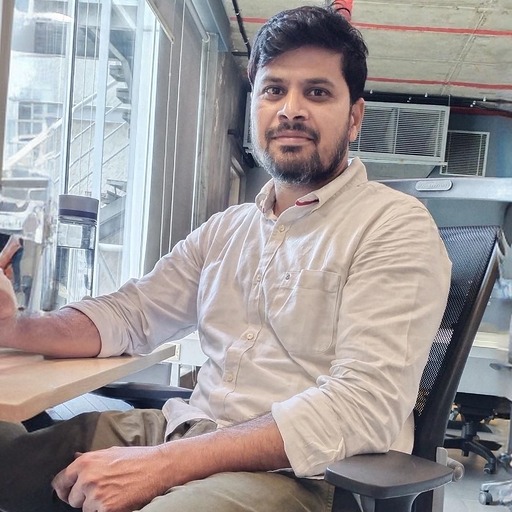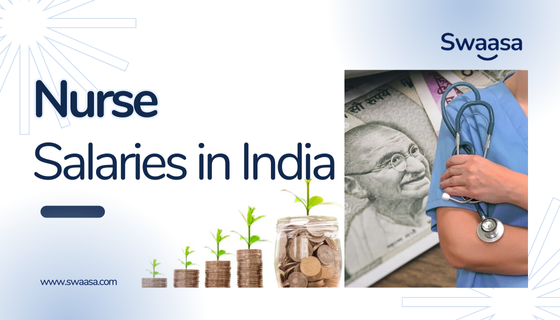Explore the vital role of Laboratory Assistants in science and healthcare, including courses, salaries, and career prospects.

Oct 23, 2024
Want to Hire the Right Healthcare Candidate? Post Job Now
100+ Urgent Vacancies – Apply & Get Hired!

The healthcare sector is a critical aspect of any nation's infrastructure, ensuring the well-being and quality of life of its citizens. In India, the government plays a significant role in providing healthcare services to its population. The Indian government's healthcare sector has both pros and cons, which this article will explore in detail. From improved accessibility to challenges in quality and infrastructure, we will delve into the various aspects of India's healthcare system.
India's government healthcare sector encompasses various programmes and initiatives aimed at providing affordable and accessible healthcare services to its citizens. The sector includes public hospitals, primary health centres, government-funded schemes, and collaborations with private healthcare providers. While there are several advantages to this system, certain challenges persist.
One of the significant advantages of the Indian government's healthcare sector is the increased accessibility to healthcare services. The government has established primary health centres in remote and rural areas, ensuring that even the underprivileged sections of society have access to basic healthcare facilities. This proactive approach to accessibility has resulted in a wider reach of healthcare services across the country.
The government healthcare sector in India offers affordable treatment options, particularly for economically weaker sections of society. Government hospitals provide subsidised or free medical services, making essential treatments and surgeries accessible to those who cannot afford private healthcare. This affordability factor plays a crucial role in ensuring that healthcare services are available to all segments of the population.
The Indian government recognises the importance of preventive healthcare and has implemented various initiatives to promote it. These initiatives include vaccination drives, awareness campaigns, and preventive check-ups. By emphasising preventive measures, the government aims to reduce the burden on healthcare facilities and improve overall public health outcomes.
India's rural areas often face challenges in accessing healthcare services due to geographical barriers and inadequate infrastructure. The government has taken steps to address this issue by establishing rural healthcare initiatives. These initiatives focus on deploying medical professionals, organising health camps, and providing mobile healthcare units to ensure that quality healthcare reaches remote areas.
The Indian government's healthcare sector also includes specialised programmes targeted at priority areas. For instance, the National Rural Health Mission (NRHM) aims to improve maternal and child healthcare in rural areas. Similarly, the National AIDS Control Programme (NACP) focuses on preventing and controlling the spread of HIV/AIDS. These programmes address specific healthcare needs and contribute to the overall well-being of the population.
One of the primary challenges faced by the Indian government's healthcare sector is the limited infrastructure and resources. Public hospitals often struggle with inadequate facilities, outdated equipment, and insufficient funding. This can lead to overcrowding and compromises in the quality of healthcare services provided.
While the Indian government's healthcare sector aims to provide quality healthcare, there are instances where the quality falls short. Overburdened hospitals and clinics may struggle to deliver timely and effective treatments. Moreover, the lack of standardised protocols and monitoring systems can affect the consistency and reliability of healthcare services.
India's vast population puts immense pressure on the government's healthcare sector. Overburdened healthcare facilities can lead to long waiting times, overcrowding, and compromised patient care. The high patient-to-doctor ratio challenges the system's capacity to provide personalised attention and timely interventions.
The availability of skilled healthcare professionals is crucial for delivering quality healthcare services. However, India faces a shortage of doctors, nurses, and other healthcare personnel, particularly in rural areas. This shortage hampers the overall effectiveness and efficiency of the government healthcare sector.
While the government healthcare sector aims to provide affordable healthcare, the coverage offered by government schemes may not be comprehensive. Inadequate health insurance coverage can limit financial protection for patients, particularly for complex and expensive treatments. This gap highlights the need for stronger insurance policies and better integration of the public and private healthcare sectors.
The Indian government's healthcare sector has both advantages and challenges. On the positive side, it provides increased accessibility, affordable treatment options, and focuses on preventive healthcare. However, limited infrastructure, compromised quality, overburdened facilities, a shortage of skilled professionals, and inadequate health insurance coverage pose significant challenges. Addressing these issues requires continuous efforts, investments, and collaborations between the government and private sectors.
In conclusion, the Indian government's healthcare sector has made significant strides in improving accessibility and affordability of healthcare services. However, challenges related to infrastructure, quality, overburdened facilities, skilled professionals, and health insurance coverage need to be addressed for a more robust and effective healthcare system in the country.
Ans: No, government hospitals in India usually provide subsidised or free medical services, but there may be certain charges for specific treatments or procedures.
Ans: To improve healthcare infrastructure in rural areas, the Indian government can focus on increasing funding, providing incentives for healthcare professionals to work in rural areas, and leveraging technology for telemedicine and mobile healthcare units.
Ans: The quality of healthcare services can vary across government hospitals in India. While some hospitals maintain high standards, others may face challenges due to limited resources and infrastructure.
Ans: To address the shortage of skilled healthcare professionals, the Indian government can implement policies to attract and retain medical talent, improve medical education and training infrastructure, and incentivize professionals to work in rural and underserved areas.
Ans: Yes, the Indian government's healthcare sector covers specialised treatments and surgeries, but their availability may vary based on the specific healthcare programme and resources in a particular region.


Oct 23, 2024
Explore the vital role of Laboratory Assistants in science and healthcare, including courses, salaries, and career prospects.


Nov 26, 2024
Explore medical coder salaries, factors influencing pay, and regional differences in this comprehensive guide for aspiring professionals.


Nov 6, 2023
Looking for low-stress nursing jobs? Check out our list of 10 nursing jobs that are generally considered to be less stressful than others.


Apr 1, 2022
Laboratory technicians often support senior scientists in various tasks and carry out tests, research and investigations. As part of a scientific team, you will play a key role in sampling, testing, measuring, recording and analyzing results.

Bengaluru, Karnataka
Assist in the development and implementation of public health programs and initiatives. - Assist in developing program materials, including educational resources and promotional materials. - Contribute...
Mumbai, Maharashtra
Patient Care, Provide compassionate and patient-centered care to individuals seeking eye care services. Treatment and Management, Administer prescribed treatments, medications, and therapies for eye conditions,...
Haryana
The Associate/Executive - Patient Care Services is responsible for overseeing the delivery of patient care services in a healthcare facility. They work closely with healthcare professionals to ensure that...
Haryana
The Associate/Executive - Patient Care Services is responsible for overseeing the delivery of patient care services in a healthcare facility. They work closely with healthcare professionals to ensure that...
Bengaluru, Karnataka
Provide an effective communication link between customers and medical staff, including relaying messages from providers, gathering information from patients for providers, etc. Coordinate with the med...
Hyderabad, Telangana
As a Patient Care Assistant, you will provide essential support and assistance to patients within a healthcare facility. Your primary responsibility will be to ensure the comfort, safety, and well-being...